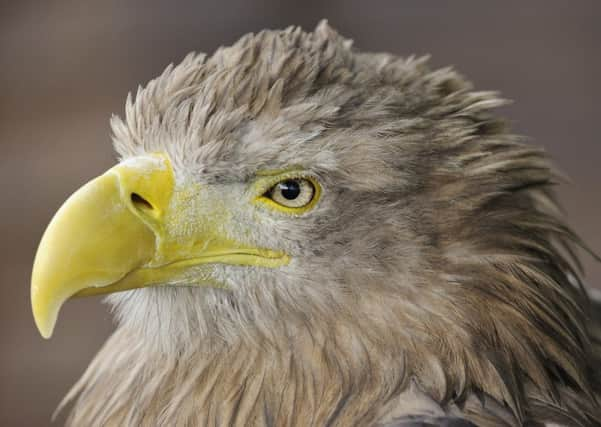Sea Eagle numbers predicted to climb


There have been three release phases to re-establish the eagles, which went extinct in 1917. Two releases occurred on the west coast of Scotland from 1975-85 (Rum) and from 1993-98 (Wester Ross), and one on the east coast (Fife) from 2007-12. There were 106 pairs of white-tailed eagles in Scotland in 2015.
The report, authored by researchers at RSPB’s Centre for Conservation Science, modelled a range of scenarios to predict the potential size of the sea eagle population, including scenarios with no limits on population growth.
Advertisement
Hide AdAdvertisement
Hide AdOther scenarios included the limits of the carrying capacity of the land (suitable habitat, food and nest sites) or other factors such as potential increased mortality.
The estimate of 221 pairs by 2025 figure is considered a realistic figure. Over the longer term, the modelling predicted the population could potentially reach 889-1,005 pairs by 2040; however, the top end of the population range is unlikely to be reached, because it does not take into account the carrying capacity of the land and other factors.
These values do not include juvenile birds, which typically do not pair up and breed until they are five or six years old.
Cabinet Secretary for the Environment, Climate Change and Land Reform, Roseanna Cunningham, said: “This report shows the return of the white tailed eagle to the skies over Scotland is a genuine conservation success story.
Advertisement
Hide AdAdvertisement
Hide Ad“That success has not been achieved easily, and I pay tribute to all of those whose efforts over many decades have helped us reach this point. This story also demonstrates the importance of working together to protect and enhance our natural environment.
“That’s why I also want to thank the many farmers and crofters who are working with us to find a way to ensure that they and the eagles can co-exist.
“Successful reintroduction projects must work with stakeholders, as well as wildlife.”
Andrew Bachell, SNH’s Director of Policy & Advice, added: “The future of the white-tailed eagle looks stable and the population is growing well.
Advertisement
Hide AdAdvertisement
Hide Ad“Many people and organisations have contributed to this success and we should be proud of it.
“We know some farmers and crofters have serious concerns about the impact of sea eagles on their livestock with some experiencing losses.
“We are working with NFU Scotland, local stakeholders and others to thoroughly understand the part sea eagles play in livestock losses, and we’re committed to working together to find solutions to allow sea eagles and livestock farmers to co-exist.”
The report, an important output from the 2014 joint statement of intent between SNH and NFU Scotland, will be used to inform future conservation actions for the species.
Advertisement
Hide AdAdvertisement
Hide Ad“It highlights the need to re-double efforts to work together with a range of land managers, particularly in farming and forestry and other interests, to mediate potential conflicts that may arise.
The SNH sea eagle management scheme has been adapted over the years as the sea eagle population became established in Scotland.
The latest scheme is trialling a range of measures in collaboration with land managers to reduce livestock predation and conflict, with a view to finding a sustainable longer term arrangement.
A scheme operating from 2015 to 2018 is investigating all issues involving sea eagle impacts on livestock, with local stakeholder groups set up across the sea eagle range in Argyll & Lochaber, Skye & Lochalsh, and Wester Ross. Other groups may be established where the demand arises.
Advertisement
Hide AdAdvertisement
Hide AdThe report also considered how the species range would expand and predicts that the birds are most likely to expand their range along the west coast of Scotland, the Great Glen and in central and eastern Scotland.
In terms of additional mortality, the report looked at risks from both wind farms and persecution.
So far, there have only been two recorded instances of a sea eagle colliding with a wind farm in Scotland; however, there is evidence from Scandinavia and continental Europe that sea eagles have a reasonably high risk of collision.
Persecution of sea eagles has been very rare in the current west coast range, but they are starting to expand into areas of Scotland where there has been a history of raptor persecution. Both wind farm collisions and persecution rates could change as sea eagles move into new territories.